Red Nichols
Red Nichols (born May 8, 1905, Ogden, Utah, USA – died June 28, 1965, Las Vegas, Nevada, USA) was an American jazz cornettist, composer, and jazz bandleader. Jazz legend Red Nichols was perhaps one of the most prolific recording artists in history. In the 1920s alone, the cornetist appeared on over 4,000 recordings, working with almost every important musician of his time. Though his style of playing was influenced by [a282067], Nichols was a better, more polished musician. His contribution to the early days of jazz cannot be overstated. Few artists can even come close to equaling his accomplishments. Nichols studied music under his father, a music professor at Weber College, and mastered a variety of instruments although he favored the cornet. As a teen he won a music scholarship to Culver Military Academy and played in its band before being expelled for smoking. Returning home to Utah, he worked in various pit orchestras, joining [a3609960] in 1922. Later that year he left Stillson for a Midwestern ensemble called the Syncopating Five, a seven-piece group that was later billed as the Royal Palms Orchestra, and toured across country with them. In 1923 Nichols settled in New York, where he met trombonist [a764782] who became a permanent fixture in Nichols' various groups. Nichols most famously recorded under the name [a317885], but the same group of musicians also recorded under many different pseudonyms, including the [a1348288], the Charleston Seven, the Arkansas Travelers, [a807449], [a=The Hottentots (3)], [a=The Tennessee Tooters], and [a=The Red Heads]. The list of top musicians who worked with Nichols is long. They include [a254768], [a299282], [a229639], [a77991], [a301372], [a261340], [a301357], [a269802], [a301370], and [a258689]. During the 1920's Nichols also led pit orchestras for two [a261293] Broadway shows, [i]Girl Crazy[/i] and [i]Strike Up the Band[/i], and played with a variety of other bandleaders, including [a299946], [a951061], Cass Hagan, [a1263865], [a4590747], [a925208], [a412673], and [a831739], as well as with the group the [a708256]. In the 1930's Nichols formed his own big band, which appeared on both [a575586]'s radio program and the Kellogg College Prom in addition to regular broadcasts from Cleveland's Golden Pheasant restaurant. Vocalists were Frances Stevens, [a1929471], and [a1929465]. Around 1940 Nichols took advantage of the swing craze and updated his sound, though he still featured a Dixieland base. The new band recorded for [l20955], with [a991517] and [a312971] providing vocals. The orchestra sounded promising when it debuted but soon floundered. By 1941 it featured an entirely new line-up, including a [a349517] sound-alike by the name of Penny Banks. After a few failed dates in Boston, Nichols gave up the band, selling it to [a1503689] in 1942. Nichols briefly found work as a member of the [a311060] before retiring to Hollywood, where he led several small groups throughout the rest of the 1940's and into the 1950's. The highly-fictional 1959 biographical film [i]The Five Pennies[/i], starring [a439536], brought renewed interest in his career and prompted Nichols to put together a new Five Pennies.
Releases
-
 The Red Nichols Collection 1926-32
The Red Nichols Collection 1926-32
-
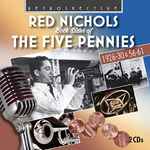 Both Sides Of The Five Pennies
Both Sides Of The Five Pennies
-
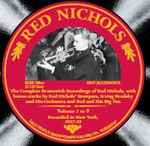 The Complete Brunswick Recordings Of Red Nichols: Volumes 7, 8 & 9
The Complete Brunswick Recordings Of Red Nichols: Volumes 7, 8 & 9
-
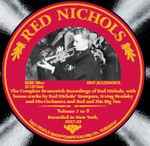 The Complete Brunswick Recordings Of Red Nichols: Volumes 4, 5 & 6
The Complete Brunswick Recordings Of Red Nichols: Volumes 4, 5 & 6
-
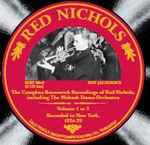 The Complete Brunswick Recordings Of Red Nichols: Volumes 1, 2 & 3
The Complete Brunswick Recordings Of Red Nichols: Volumes 1, 2 & 3
-
 Red Nichols 1930-1931
Red Nichols 1930-1931
-
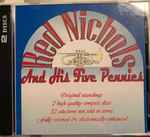 Red Nichols And His Five Pennies
Red Nichols And His Five Pennies
-
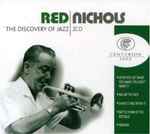 The Discovery Of Jazz
The Discovery Of Jazz
-
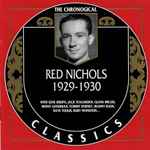 1929-1930
1929-1930
-
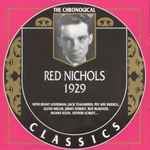 1929
1929
-
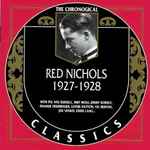 1927-1928
1927-1928
-
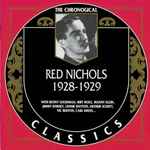 1928-1929
1928-1929
-
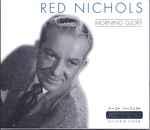 Morning Glory
Morning Glory
-
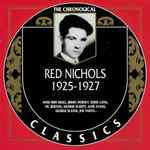 1925-1927
1925-1927
-
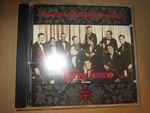 New York Jazz In The Roaring Twenties Volume 2
New York Jazz In The Roaring Twenties Volume 2
-
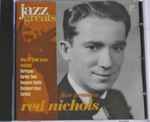 Five Pennies
Five Pennies
-
 Strike Up The Band
Strike Up The Band
-
 Red Nichols & Miff Mole, 1925-1927
Red Nichols & Miff Mole, 1925-1927
-
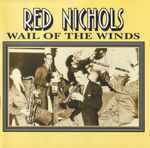 Wail Of The Winds
Wail Of The Winds
-
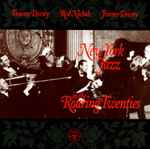 New York Jazz In The Roaring Twenties
New York Jazz In The Roaring Twenties
-
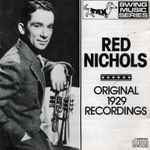 Original 1929 Recordings
Original 1929 Recordings
-
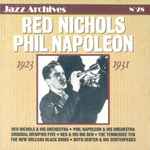 1923/1931
1923/1931
-
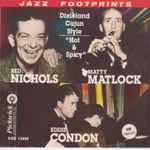 Dixieland Cajun Style
Dixieland Cajun Style
-
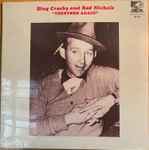 Together Again
Together Again
-
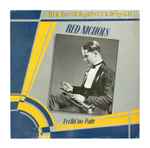 Feelin' no Pain
Feelin' no Pain
-
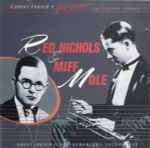 Great Original Performances - 1925 To 1930
Great Original Performances - 1925 To 1930
-
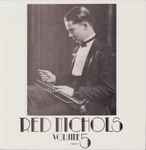 Volume 5
Volume 5
-
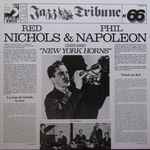 New York Horns (1923-1931)
New York Horns (1923-1931)
-
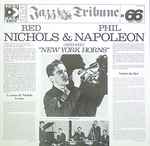 New York Horns (1923-1931)
New York Horns (1923-1931)
-
 Real Rare Red - Volume II: The Acoustical Years 1925-1927
Real Rare Red - Volume II: The Acoustical Years 1925-1927
-
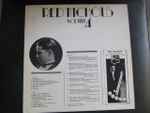 Volume 4
Volume 4
-
 1929 - 1931
1929 - 1931
-
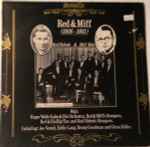 Red & Miff (1926-1931)
Red & Miff (1926-1931)
-
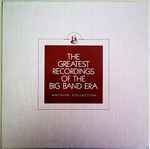 The Greatest Recordings Of The Big Band Era
The Greatest Recordings Of The Big Band Era
-
 The Sounds Of New York Volume 4 (1924-1930)
The Sounds Of New York Volume 4 (1924-1930)
-
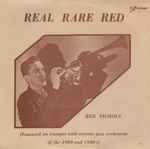 Real Rare Red
Real Rare Red
-
 Volume 3
Volume 3
-
 The Legendary Earl Baker Cylinders 1926 - Red Nichols Radio Transcriptions 1929-30
The Legendary Earl Baker Cylinders 1926 - Red Nichols Radio Transcriptions 1929-30
-
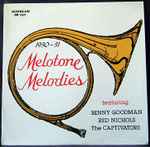 Melotone Melodies 1930 – 31
Melotone Melodies 1930 – 31
-
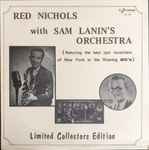 Red Nichols with Sam Lanin's Orchestra
Red Nichols with Sam Lanin's Orchestra
-
 Volume 2
Volume 2
-
 Jazz In a Vertical Groove
Jazz In a Vertical Groove
-
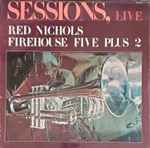 Sessions, Live
Sessions, Live
-
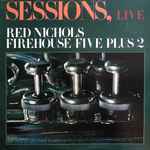 Sessions, Live
Sessions, Live
-
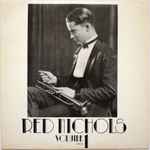 Volume 1
Volume 1
-
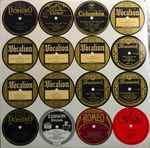 Early Red Nichols 1925-1927
Early Red Nichols 1925-1927
-
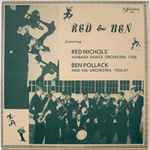 Red & Ben
Red & Ben
-
 The One And Only
The One And Only
-
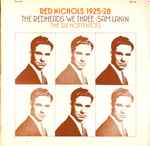 1925-28: The Redheads - We Three - Sam Lanin - The Six Hottentots
1925-28: The Redheads - We Three - Sam Lanin - The Six Hottentots
-
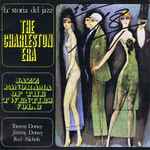 Jazz Panorama Of The Twenties Vol. 2
Jazz Panorama Of The Twenties Vol. 2
 The Red Nichols Collection 1926-32
The Red Nichols Collection 1926-32
 Both Sides Of The Five Pennies
Both Sides Of The Five Pennies
 The Complete Brunswick Recordings Of Red Nichols: Volumes 7, 8 & 9
The Complete Brunswick Recordings Of Red Nichols: Volumes 7, 8 & 9
 The Complete Brunswick Recordings Of Red Nichols: Volumes 4, 5 & 6
The Complete Brunswick Recordings Of Red Nichols: Volumes 4, 5 & 6
 The Complete Brunswick Recordings Of Red Nichols: Volumes 1, 2 & 3
The Complete Brunswick Recordings Of Red Nichols: Volumes 1, 2 & 3
 Red Nichols 1930-1931
Red Nichols 1930-1931
 Red Nichols And His Five Pennies
Red Nichols And His Five Pennies
 The Discovery Of Jazz
The Discovery Of Jazz
 1929-1930
1929-1930
 1929
1929
 1927-1928
1927-1928
 1928-1929
1928-1929
 Morning Glory
Morning Glory
 1925-1927
1925-1927
 New York Jazz In The Roaring Twenties Volume 2
New York Jazz In The Roaring Twenties Volume 2
 Five Pennies
Five Pennies
 Strike Up The Band
Strike Up The Band
 Red Nichols & Miff Mole, 1925-1927
Red Nichols & Miff Mole, 1925-1927
 Wail Of The Winds
Wail Of The Winds
 New York Jazz In The Roaring Twenties
New York Jazz In The Roaring Twenties
 Original 1929 Recordings
Original 1929 Recordings
 1923/1931
1923/1931
 Dixieland Cajun Style
Dixieland Cajun Style
 Together Again
Together Again
 Feelin' no Pain
Feelin' no Pain
 Great Original Performances - 1925 To 1930
Great Original Performances - 1925 To 1930
 Volume 5
Volume 5
 New York Horns (1923-1931)
New York Horns (1923-1931)
 New York Horns (1923-1931)
New York Horns (1923-1931)
 Real Rare Red - Volume II: The Acoustical Years 1925-1927
Real Rare Red - Volume II: The Acoustical Years 1925-1927
 Volume 4
Volume 4
 1929 - 1931
1929 - 1931
 Red & Miff (1926-1931)
Red & Miff (1926-1931)
 The Greatest Recordings Of The Big Band Era
The Greatest Recordings Of The Big Band Era
 The Sounds Of New York Volume 4 (1924-1930)
The Sounds Of New York Volume 4 (1924-1930)
 Real Rare Red
Real Rare Red
 Volume 3
Volume 3
 The Legendary Earl Baker Cylinders 1926 - Red Nichols Radio Transcriptions 1929-30
The Legendary Earl Baker Cylinders 1926 - Red Nichols Radio Transcriptions 1929-30
 Melotone Melodies 1930 – 31
Melotone Melodies 1930 – 31
 Red Nichols with Sam Lanin's Orchestra
Red Nichols with Sam Lanin's Orchestra
 Volume 2
Volume 2
 Jazz In a Vertical Groove
Jazz In a Vertical Groove
 Sessions, Live
Sessions, Live
 Sessions, Live
Sessions, Live
 Volume 1
Volume 1
 Early Red Nichols 1925-1927
Early Red Nichols 1925-1927
 Red & Ben
Red & Ben
 The One And Only
The One And Only
 1925-28: The Redheads - We Three - Sam Lanin - The Six Hottentots
1925-28: The Redheads - We Three - Sam Lanin - The Six Hottentots
 Jazz Panorama Of The Twenties Vol. 2
Jazz Panorama Of The Twenties Vol. 2